Michael Chin Ming Fu
age ~55
from Cupertino, CA
- Also known as:
-
- Michael Chin-Ming Fu
- Michael Chinming Fu
- Michael C Fu
- Mike C Fu
- Michael Chin
- Michael C Hin
- Phone and address:
-
1248 Weymoth Dr, Cupertino, CA 95014
4087370110
Michael Fu Phones & Addresses
- 1248 Weymoth Dr, Cupertino, CA 95014 • 4087370110
- Mc Kinney, TX
- Henderson, NV
- Palo Alto, CA
- 2991 Briona Ct, San Jose, CA 95124
- Sunnyvale, CA
- Urbana, IL
- Champaign, IL
- Colton, TX
- 1248 Weymoth Dr, Cupertino, CA 95014
Work
-
Position:Machine Operators, Assemblers, and Inspectors Occupations
Wikipedia References

Michael Fuß
Name / Title
Company / Classification
Phones & Addresses
Vice President - Technology
The Fluid Image
2041 Bancroft Way, Berkeley, CA 94707
5105276348
5105276348
President
MASCOT INTERNATIONAL
Mfg Gold Plated and Crystal Gifts
Mfg Gold Plated and Crystal Gifts
1055 Harrison St, Berkeley, CA 94710
5105273965, 5105273967, 8003254625
5105273965, 5105273967, 8003254625
Chief Technology Officer
Primary Global Research, LLC
Data Processing/Preparation · Information Technology Consulting Svcs
Data Processing/Preparation · Information Technology Consulting Svcs
1975 W El Cam, Mountain View, CA 94040
PO Box 3780, Saratoga, CA 95070
1975 W El Camino Real, Mountain View, CA 94040
6509608182, 6509601800
PO Box 3780, Saratoga, CA 95070
1975 W El Camino Real, Mountain View, CA 94040
6509608182, 6509601800
Resumes

Director Of Engineering, Ios And Android Google Search App Experience
view sourceLocation:
1248 Weymoth Dr, Cupertino, CA 95014
Industry:
Information Technology And Services
Work:
PGR
CTO
CTO
Education:
University of Illinois at Urbana - Champaign 1992 - 1997
Master of Science, Doctorates, Masters, Doctor of Philosophy, Computer Science, Philosophy University of California, Berkeley 1988 - 1992
Bachelors, Bachelor of Science, Electrical Engineering, Electrical Engineering and Computer Science, Computer Science
Master of Science, Doctorates, Masters, Doctor of Philosophy, Computer Science, Philosophy University of California, Berkeley 1988 - 1992
Bachelors, Bachelor of Science, Electrical Engineering, Electrical Engineering and Computer Science, Computer Science
Skills:
Software Development
Mobile Phone Apps
Wearable Computing
Google Glass
Android Development
Ios Development
Software Engineering
Cross Functional Team Leadership
Technical Recruiting
User Experience
User Interface Design
Cloud Applications
Platform Architecture
Product Development
Product Design
Paas
Saas
Gamification
Game Design
Outsourced Solutions
Sql
Java
Javascript
Html 5
Atlassian Jira
Mobile Applications
Mobile Devices
Android
Mobile Phone Apps
Wearable Computing
Google Glass
Android Development
Ios Development
Software Engineering
Cross Functional Team Leadership
Technical Recruiting
User Experience
User Interface Design
Cloud Applications
Platform Architecture
Product Development
Product Design
Paas
Saas
Gamification
Game Design
Outsourced Solutions
Sql
Java
Javascript
Html 5
Atlassian Jira
Mobile Applications
Mobile Devices
Android
Interests:
Exercise
Electronics
Home Improvement
Kinderen
Reading
Automobiles
Home Decoration
Electronics
Home Improvement
Kinderen
Reading
Automobiles
Home Decoration
Languages:
English

Michael Fu
view source
Michael Fu
view sourceLocation:
United States

Michael Fu
view sourceLocation:
United States

Michael Fu Mountain View, CA
view sourceWork:
Youku Tudou Inc
Dec 2011 to May 2013
Senior Director, Investor Relations and Corporate Development Marcus Food & Beverage Mgmt Co
Mar 2010 to Nov 2011
Vice President, Finance and Real Estate The Bear Stearns Companies, Inc
New York, NY
Jun 2006 to Aug 2008
Senior Associate, Real Estate and Lodging Group Bank of America Corporation
San Francisco, CA
Jul 2005 to May 2006
Associate, Real Estate and Lodging Group Signal Hill Capital Group LLC
Baltimore, MD
Jul 2002 to May 2004
Associate, Mergers and Acquisitions Deutsche Bank AG
Baltimore, MD
Jul 2000 to Jun 2002
Analyst, Media and Telecommunications Group
Dec 2011 to May 2013
Senior Director, Investor Relations and Corporate Development Marcus Food & Beverage Mgmt Co
Mar 2010 to Nov 2011
Vice President, Finance and Real Estate The Bear Stearns Companies, Inc
New York, NY
Jun 2006 to Aug 2008
Senior Associate, Real Estate and Lodging Group Bank of America Corporation
San Francisco, CA
Jul 2005 to May 2006
Associate, Real Estate and Lodging Group Signal Hill Capital Group LLC
Baltimore, MD
Jul 2002 to May 2004
Associate, Mergers and Acquisitions Deutsche Bank AG
Baltimore, MD
Jul 2000 to Jun 2002
Analyst, Media and Telecommunications Group
Education:
Northwestern University - Kellogg School of Management
Evanston, IL
Jun 2004 to Jun 2005
MBA in Finance and Entrepreneurship University of Michigan - Ross School of Business
Ann Arbor, MI
Sep 1996 to Jun 2000
Bachelor of Business Administration in Finance and Accounting
Evanston, IL
Jun 2004 to Jun 2005
MBA in Finance and Entrepreneurship University of Michigan - Ross School of Business
Ann Arbor, MI
Sep 1996 to Jun 2000
Bachelor of Business Administration in Finance and Accounting

Michael Fu Los Angeles, CA
view sourceWork:
Revolution
Jul 2013 to 2000
Curriculum Writer/Developer Google Inc
Mountain View, CA
Oct 2012 to Oct 2013
Enterprise Product Fulfillment Specialist Westlake Middle School
Oakland, CA
Aug 2011 to Jun 2012
Middle School Science Instructor Making Waves Academy
Richmond, CA
Jul 2010 to Jun 2011
Middle School Math Instructor
Jul 2013 to 2000
Curriculum Writer/Developer Google Inc
Mountain View, CA
Oct 2012 to Oct 2013
Enterprise Product Fulfillment Specialist Westlake Middle School
Oakland, CA
Aug 2011 to Jun 2012
Middle School Science Instructor Making Waves Academy
Richmond, CA
Jul 2010 to Jun 2011
Middle School Math Instructor
Education:
UNIVERSITY OF CALIFORNIA, BERKELEY
Berkeley, CA
May 2009
M.A. in Science and Math Education
Berkeley, CA
May 2009
M.A. in Science and Math Education

Michael Fu San Diego, CA
view sourceWork:
AsteelFlash Group
2012 to Present
Plant Manager AsteelFlash Group
2011 to 2012
Director of Program Management AsteelFlash Group
Fremont, CA
2007 to 2011
Program Management Manager Flash Electronics
Fremont, CA
2006 to 2007
Manager of Program Management (Business Unit Manager) Flash Electronics
2004 to 2006
Global Program Manager Flash Electronics
2000 to 2004
Program Manager Flash Electronics
1999 to 2000
Quotations Manager
2012 to Present
Plant Manager AsteelFlash Group
2011 to 2012
Director of Program Management AsteelFlash Group
Fremont, CA
2007 to 2011
Program Management Manager Flash Electronics
Fremont, CA
2006 to 2007
Manager of Program Management (Business Unit Manager) Flash Electronics
2004 to 2006
Global Program Manager Flash Electronics
2000 to 2004
Program Manager Flash Electronics
1999 to 2000
Quotations Manager
Education:
University of California at Davis
Davis, CA
1992 to 1996
BA in Economics
Davis, CA
1992 to 1996
BA in Economics
Skills:
Administration and Office Skills- ERP - SAP Product Management - Agile Office - Microsoft Office (Excel, Project, PowerPoint)
Isbn (Books And Publications)

Conditional Monte Carlo: Gradient Estimation and Optimization Applications
view sourceAuthor
Michael C. Fu
ISBN #
0792398734
Medicine Doctors

Michael M. Fu
view sourceSpecialties:
Optometry
Work:
D'Ambrosio Eye Care IncDambrosio Eye Care Inc
479 Old Un Tpke, Lancaster, MA 01523
9785373900 (phone), 9785376030 (fax)
Dambrosio Eye Care
100 Powdermill Rd, Acton, MA 01720
9788977212 (phone), 9784610345 (fax)
Dambrosio Eye Care Inc
74 Main St, Gardner, MA 01440
9786323930 (phone), 9785376030 (fax)
479 Old Un Tpke, Lancaster, MA 01523
9785373900 (phone), 9785376030 (fax)
Dambrosio Eye Care
100 Powdermill Rd, Acton, MA 01720
9788977212 (phone), 9784610345 (fax)
Dambrosio Eye Care Inc
74 Main St, Gardner, MA 01440
9786323930 (phone), 9785376030 (fax)
Procedures:
Ophthalmological Exam
Languages:
English
Description:
Dr. Fu works in Acton, MA and 2 other locations and specializes in Optometry. Dr. Fu is affiliated with Emerson Hospital, HealthAlliance Hospital Leominster, Henry Heywood Memorial Hospital and St Vincent Hospital.
Us Patents
-
Multiple Pass Optimization For Automatic Electronic Circuit Placement
view source -
US Patent:6766500, Jul 20, 2004
-
Filed:Dec 6, 2001
-
Appl. No.:10/016232
-
Inventors:Ross A. Donelly - Sunnyvale CA
William C. Naylor - San Jose CA
Michael Fu - San Jose CA -
Assignee:Synopsys, Inc. - Mountain View CA
-
International Classification:G06F 1750
-
US Classification:716 10, 716 13, 716 14, 716 12, 716 1
-
Abstract:A computer implemented process for the automatic creation of integrated circuit (IC) geometry including a multiple pass process flow using multiple passes of direct timing driven placement after a first pass of non-direct timing driven placement. First, a high level description of the circuit design may be synthesized. Next, a non-direct timing driven placement process may place the design. Then the placed design may be routed. Alternatively, routability may be estimated. After routing, a modified design may be resynthesized. The resynthesized design may then be placed according to a direct timing driven placement process. This sequence may be repeated several times.
-
System For Storing, Displaying, And Navigating Content Data Regarding Market Driven Industries
view source -
US Patent:20070276871, Nov 29, 2007
-
Filed:May 18, 2007
-
Appl. No.:11/750661
-
Inventors:Michael Fu - San Jose CA, US
Harold Sun - Tigard OR, US
Unni Narayanan - Sunnyvale CA, US
William Ward Carey - Hillsborough CA, US
Phani Saripella - Santa Clara CA, US -
Assignee:PRIMARY GLOBAL RESEARCH, LLC - Mountain View CA
-
International Classification:G06F 7/00
-
US Classification:7071041
-
Abstract:A model and system employing the model provides an organized structure for storing, displaying, and navigating content data regarding instruments for market driven industries (i.e., securities). A Market Research Model (MRM) paradigm is used to represent elemental concepts, a plurality of specific classes of entities form the MRM, and an interface is used to assemble, maintain, and interact with the model. Information may be added to the model by a research provider and provided to an end user on a subscription basis. The user is provided with an interconnected, navigable model of an item of interest for research and decision-making support.
-
Streaming Synchronized Media Content To Separate Devices
view source -
US Patent:20200358849, Nov 12, 2020
-
Filed:Jul 28, 2020
-
Appl. No.:16/940600
-
Inventors:- San Jose CA, US
Michael Chin-Ming FU - Cupertino CA, US -
International Classification:H04L 29/08
H04L 29/06
H04N 21/4363
H04N 21/43 -
Abstract:Described are system, apparatus, article of manufacture, method, or computer program product embodiments for controlling streaming of media content. An embodiment operates by halting a presentation of future content from a buffer upon determining that the buffer is exhausted of content to present. The embodiment includes receiving one or more packets over a network connection, the one or more packets including media information corresponding to a first portion of streaming media content, in which the first portion corresponds to a second portion of the streaming media content. The one or more packets in a buffer are stored as buffered content. Responsive to determining that the network connection is not experiencing a burst condition, the buffer is trimmed. Then, presentation of buffered content is resumed and the first portion is caused to be presented in sync with the second portion.
-
Controlling Display Device Settings From A Mobile Device Touch Interface
view source -
US Patent:20200249827, Aug 6, 2020
-
Filed:Jan 7, 2020
-
Appl. No.:16/736283
-
Inventors:- Los Gatos CA, US
James Harold SHAW - Portland OR, US
Anita RANGANATH - Cupertino CA, US
Gregory S. GATES - Saratoga CA, US
Michael Chin-Ming FU - Cupertino CA, US
Matthew WEE - San Jose CA, US
Kevin Ralph COOPER - San Jose CA, US
Charles L. SMITH - Andover MA, US
Harold SUN - Tigard OR, US -
International Classification:G06F 3/0484
H04N 5/44
H04N 21/422
G06F 3/0488
G06F 3/14
H04N 21/4363
H04N 21/485 -
Abstract:System, method, and computer product embodiments for controlling a display device's display settings from a computing device's touch-based user interface are described. In an embodiment, the computing device establishes a wireless connectivity with the display device. The computing device sends a command generated to query information related to the display setting. Then, the computing device receives the queried information from the display device. The computing device configures a graphical user interface (GUI) with the queried information to display configurations of the display settings on the touchscreen. The configurations include the display settings currently configured in the display device. The computing device further enables, within GUI, a displayed configuration from the display configurations to be calibrated by one or more touch gestures on the touchscreen.
-
System And Method For Capture And Adaptive Data Generation For Training For Machine Vision
view source -
US Patent:20200050965, Feb 13, 2020
-
Filed:Aug 7, 2019
-
Appl. No.:16/534763
-
Inventors:- Albany CA, US
MICHAEL FU - ALBANY CA, US -
International Classification:G06N 20/00
G06N 5/04 -
Abstract:A computer-implemented method of performing machine vision prediction of digital images using synthetically generated training assets comprises digitally capturing a plurality of assets; configuring each of the assets in the plurality of assets with a plurality of asset attributes; under computer program control, selecting a plurality of different combinations of parameters from among the plurality of asset attributes, and creating a plurality of sets of different synthetic dataset parameters; using computer graphics software, and example parameter values from among the synthetic dataset parameters, creating a synthetic dataset by compiling from a plurality of example images and metadata; configuring a plurality of machine learning trials and executing the trials to train a machine vision model, resulting in creating and storing a trained machine vision model; executing a validation of the trained machine vision model; and inferring a prediction using the trained machine vision model. Trained models are scored against success criteria and re-trained using pseudo-random sampling of different parameters clustered around failure points. As a result, machine vision models may be trained with high accuracy using large datasets of synthesized digital images that are richly parameterized, rather than human captured digital images.
-
Flexible Output Of Streaming Media
view source -
US Patent:20180035155, Feb 1, 2018
-
Filed:Aug 1, 2016
-
Appl. No.:15/225338
-
Inventors:- Saratoga CA, US
Anthony Wood - Saratoga CA, US
Gregory S. Gates - Saratoga CA, US
Michael Chin-Ming Fu - Cupertino CA, US -
International Classification:H04N 21/41
H04N 21/6587
H04N 21/422
H04N 21/6377
H04N 21/234
H04N 21/472
H04N 21/436
H04N 21/63 -
Abstract:Disclosed herein are system, method, and computer program product embodiments for flexible output of streaming media. An embodiment operates by receiving, at a media server, media over a network. Output media, corresponding to the received media, is streamed to a display device. The output media includes a video component and an audio component. A command is received. Responsive to the command, the streaming of the video component to the display device is discontinued. A streaming of the video component is begun to a mobile device at a point in the video component corresponding where the video was discontinued.
-
Streaming Synchronized Media Content To Separate Devices
view source -
US Patent:20170289246, Oct 5, 2017
-
Filed:Jul 27, 2016
-
Appl. No.:15/220696
-
Inventors:- Saratoga CA, US
Michael Chin-Ming FU - Cupertino CA, US -
International Classification:H04L 29/08
H04L 29/06 -
Abstract:Described are system, apparatus, article of manufacture, method, or computer program product embodiments for controlling streaming of media content. An embodiment operates by halting a presentation of future content from a buffer upon determining that the buffer is exhausted of content to present. The embodiment includes receiving one or more packets over a network connection, the one or more packets including media information corresponding to a first portion of streaming media content, in which the first portion corresponds to a second portion of the streaming media content. The one or more packets in a buffer are stored as buffered content. Responsive to determining that the network connection is not experiencing a burst condition, the buffer is trimmed. Then, presentation of buffered content is resumed and the first portion is caused to be presented in sync with the second portion.
-
Efficient Communication Interface For Casting Interactively Controlled Visual Content
view source -
US Patent:20170269895, Sep 21, 2017
-
Filed:Mar 15, 2016
-
Appl. No.:15/070800
-
Inventors:Harold Sun - Tigard OR, US
Michael Chin-Ming Fu - Cupertino CA, US -
International Classification:G06F 3/14
G06T 3/20
G06T 3/40
G06T 3/00 -
Abstract:System, method, and computer product embodiments for efficiently casting interactively-controlled visual content displayed on a first display screen to a second display screen. In an embodiment, the computing device sends the visual content displayed on the first display screen to a multimedia device for displaying on the second display screen. Upon receipt of an instruction that visually manipulates how the visual content is displayed on the first display screen, the computing device generates a command representative of the received instruction. The command may specify a positional relationship between the center of the first display screen and the visual content displayed on the first display screen. Then, the computing devices sends the command to the multimedia device that causes the second display screen to display the visual content according to the positional relationship.
Plaxo

Michael Militano WING CHU...
view source123 Bowery Street CHINATOWN, NY 10002
Flickr
Myspace
Googleplus
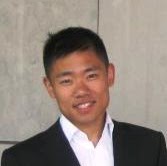
Michael Fu
Work:
General Mills
Education:
Schulich School of Business - Marketing

Michael Fu
Education:
Massachusetts Institute of Technology - Chemical Engineering and Economics, Beavercreek High School
About:
Hi, my name is Michael. I like long walks on the beach and linear algebra.
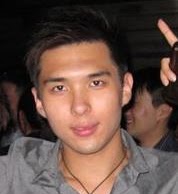
Michael Fu
Education:
Hong Kong University of Science and Technology - BBA
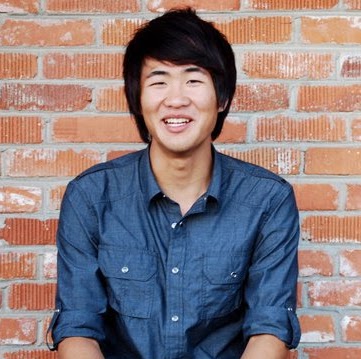
Michael Fu
Education:
University of California, Berkeley - Molecular & Cell Biology
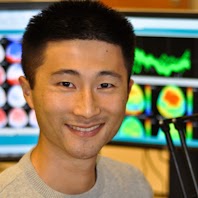
Michael Fu
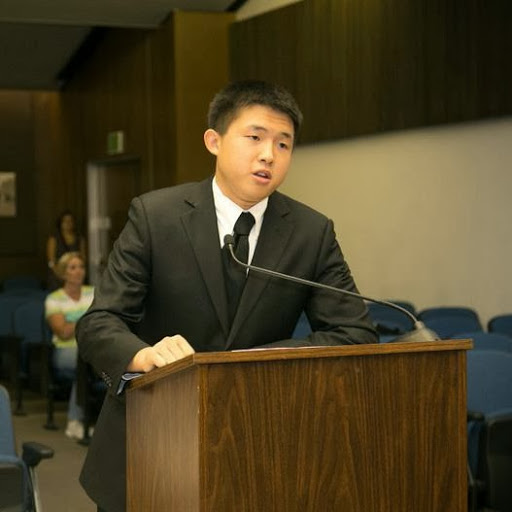
Michael Fu

Michael Fu

Michael Fu
Classmates

Sierra - Enterprise Eleme...
view sourceGraduates:
Michael Fu (1995-1999),
April Cook (1967-1967),
Tony Dias (1960-1966),
Samantha Bruton (1989-1996)
April Cook (1967-1967),
Tony Dias (1960-1966),
Samantha Bruton (1989-1996)

Caoyang High School, Shan...
view sourceGraduates:
Michael Fu (1994-1998),
WeiJia Lou (1994-1998),
Xiaofei Wan (1991-1995),
Yi Yang (1981-1985),
Yanzhang Zhao (1992-1996),
Changcheng Zhao (1989-1993)
WeiJia Lou (1994-1998),
Xiaofei Wan (1991-1995),
Yi Yang (1981-1985),
Yanzhang Zhao (1992-1996),
Changcheng Zhao (1989-1993)

North Royalton Middle Sch...
view sourceGraduates:
Eric Schaffran (2000-2004),
Mike Fu (1998-1999),
Jackie Dinallo (2002-2003),
Anthony Tomaro (2000-2004),
Tyler Hill (2000-2004)
Mike Fu (1998-1999),
Jackie Dinallo (2002-2003),
Anthony Tomaro (2000-2004),
Tyler Hill (2000-2004)

Harper's Choice Middle Sc...
view sourceGraduates:
David Westfall (1981-1982),
Wael Ali (1999-2003),
Alicia Darden (1990-1991),
Christine Broglio (1981-1984),
Mike Fu (1996-1998)
Wael Ali (1999-2003),
Alicia Darden (1990-1991),
Christine Broglio (1981-1984),
Mike Fu (1996-1998)
Youtube

Michael Fu
view source
Michael MuMu Fu
view source
Michael Fu Tan
view source
Michael Fu
view source
Mike Fu
view source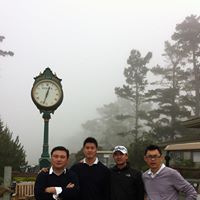
Michael Fu
view source
Michael Fu
view source
Michael Fu
view sourceGet Report for Michael Chin Ming Fu from Cupertino, CA, age ~55













